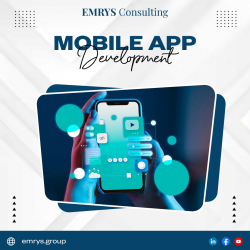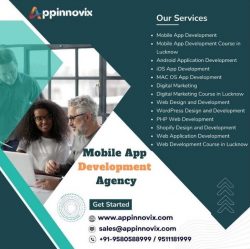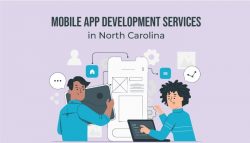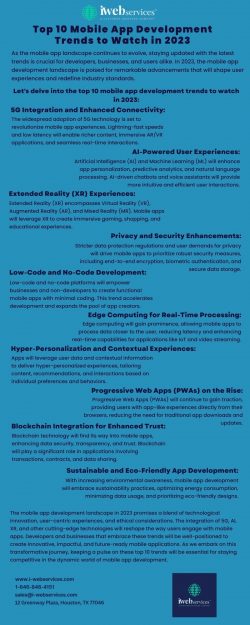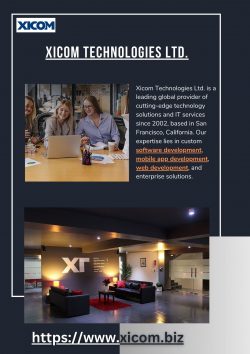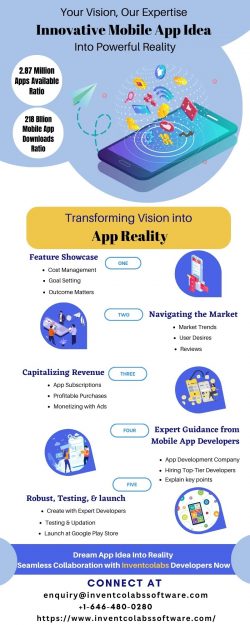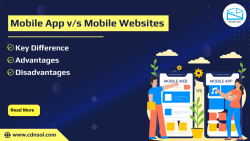Mobile App Development for Startups: A Guide to Success
In today’s digital landscape, a well-designed and strategically-executed mobile app can be a game-changer for startups. Whether you’re looking to enhance your brand visibility, drive customer engagement, or unlock new revenue streams, a thoughtfully-developed mobile app can be a powerful tool in your arsenal.
However, the path to mobile app success is not without its challenges. From defining your target audience to selecting the right development approach, there are numerous factors to consider. In this comprehensive guide, we’ll explore the key steps and best practices that will help your startup navigate the mobile app development journey and emerge victorious.
Understanding the Mobile App Development Process
A. Research and Planning
Identifying the target audience and market: Conduct thorough market research to gain insights into the needs, pain points, and preferences of your potential users. Crafting detailed user personas will help you tailor your app’s features and user experience to their specific requirements.
Conducting competitor analysis: Analyze the mobile app offerings of your industry’s key players. Identify their strengths, weaknesses, and any gaps in the market that your app can fill.
Defining the app’s features and functionality: Based on your user research and competitive analysis, prioritize the essential features that will provide the most value to your target audience. Resist the temptation to include every possible feature, as this can lead to a bloated and overwhelming app.
B. Design and Prototyping
Creating wireframes and mockups: Develop low-fidelity wireframes and high-fidelity mockups to visualize the app’s user interface and user flow. This will help you refine the design and ensure a seamless user experience.
User experience (UX) and user interface (UI) design considerations: Adopt a minimalist design approach that prioritizes simplicity, clarity, and ease of use. Ensure that your app’s navigation, information architecture, and overall flow are designed with user needs in mind.
C. Development
Choosing the right technology stack: Evaluate the pros and cons of native, hybrid, and cross-platform development approaches to determine the most suitable option for your startup’s mobile app.
Front-end and back-end development: Collaborate with your development team to bring your app’s design and functionality to life, ensuring that the codebase is scalable and maintainable.
Testing and quality assurance: Implement a comprehensive testing strategy to identify and address any bugs, crashes, or performance issues before launching your app.
Choosing the Right Development Approach
A. Native App Development
Pros and cons: Native app development offers superior performance, seamless integration with device hardware and software, and the ability to leverage platform-specific features and APIs. However, it can be more time-consuming and resource-intensive, as you’ll need to build and maintain separate codebases for each platform.
Best use cases for native app development: Native apps are often the preferred choice for apps that require extensive device integration, complex animations, or advanced features that are specific to a single platform.
B. Hybrid App Development
Pros and cons: Hybrid app development allows you to create a single codebase that can be deployed across multiple platforms, making it a more cost-effective and efficient approach, particularly for startups with limited resources. However, hybrid apps may not offer the same level of performance and platform-specific functionality as native apps.
Best use cases for hybrid app development: Hybrid apps can be a suitable choice for startups with a limited budget or development team, or for apps that don’t require extensive device integration or advanced platform-specific features.
C. Cross-Platform App Development
Pros and cons: Cross-platform development frameworks, such as React Native and Flutter, enable you to build high-performance, native-like apps using a single codebase. This approach can be more cost-effective and efficient than native app development.
Best use cases for cross-platform app development: Cross-platform development is often the preferred choice for startups that need to reach a wide audience across multiple platforms, while still maintaining a consistent user experience and leveraging platform-specific features.
Budgeting and Resource Allocation
A. Estimating the development cost
Factors influencing the cost: The cost of mobile app development can vary significantly based on factors such as the complexity of the app, the development approach, the location of the development team, and the need for ongoing maintenance and updates.
Budget allocation tips for startups: Startups should carefully prioritize their app’s features and functionalities, focusing on the essential elements that will provide the most value to their target audience. Additionally, startups should consider leveraging cost-effective cross-platform or hybrid development approaches to maximize their budget.
B. Allocating human resources
In-house vs. outsourcing development teams: Startups must weigh the pros and cons of building an in-house development team versus outsourcing the work to a third-party agency or freelancers. Factors such as cost, expertise, and control over the development process should be considered.
Hiring considerations for startups: When building an in-house development team, startups should focus on finding talented individuals with the right mix of technical skills, experience, and cultural fit. Offering competitive compensation, providing opportunities for growth, and fostering a collaborative work environment can help startups attract and retain top talent.
App Marketing and Launch Strategy
A. Pre-launch marketing activities
Building a pre-launch buzz: Startups should leverage various marketing channels, such as social media, content marketing, and email campaigns, to generate excitement and anticipation for their app’s launch. This can include teaser campaigns, early access programs, and influencer partnerships.
App store optimization (ASO) strategies: Optimizing your app’s metadata, including its title, description, and keywords, can significantly improve its visibility and discoverability in app stores. Startups should conduct thorough keyword research and implement effective ASO tactics to ensure their app stands out in a crowded marketplace.
B. Post-launch marketing activities
User acquisition and retention strategies: Startups should continue to engage their target audience through in-app messaging, push notifications, and regular content updates. Leveraging user feedback and analytics to refine their marketing strategies can help them acquire and retain users effectively.
Leveraging social media and influencer marketing: Collaborating with relevant influencers, industry experts, or thought leaders can be an effective way for startups to reach new potential users and build trust in their app’s brand.
Monetization Strategies for Mobile Apps
A. Freemium model
Pros and cons: The freemium model, where the app is available for free with optional in-app purchases, can be an attractive option for startups. It allows them to attract a larger user base while generating revenue from a subset of users who are willing to pay for premium features or content.
Implementation tips for startups: Startups should carefully analyze their target audience’s needs and preferences to determine which features or content should be offered as paid upgrades. Providing a clear value proposition and a seamless in-app purchase experience is crucial for the success of the freemium model.
B. In-app purchases and subscriptions
Maximizing revenue through in-app purchases: Startups can generate revenue by offering virtual goods, premium features, or content that users can purchase within the app. Careful pricing, product bundling, and user segmentation can help optimize in-app purchase revenue.
Subscription-based monetization strategies: Startups can also consider a subscription-based model, where users pay a recurring fee to access the app’s premium features or content. This can provide a more stable and predictable revenue stream, but startups must ensure that the subscription offering provides ongoing value to their users.
App Maintenance and Optimization
A. Regular updates and bug fixes
Startups must commit to regularly maintaining and updating their mobile app to address user feedback, fix bugs, and ensure compatibility with the latest operating system versions. Prompt issue resolution and a responsive approach to user support can help build trust and loyalty among the app’s user base.
B. Performance optimization and user feedback management
Continuously monitoring the app’s performance metrics and user feedback is essential for identifying areas for improvement. Startups should leverage analytics tools and user engagement data to optimize the app’s features, design, and overall user experience, ensuring that it remains relevant and engaging to their target audience.
Case Studies of Successful Startup Mobile Apps
Examining the journeys of successful startup mobile apps can provide valuable insights and lessons for other entrepreneurs. Analyzing the strategies, challenges, and key milestones of these case studies can help startups navigate their own mobile app development journey more effectively.
Conclusion
Developing a successful mobile app for your startup is a multifaceted endeavor that requires a strategic and user-centric approach. By understanding your target audience, selecting the right development approach, crafting an engaging user experience, implementing effective marketing and monetization strategies, and maintaining a commitment to continuous improvement, you can position your startup for mobile app success.
Remember, the mobile app landscape is constantly evolving, and staying agile, adaptable, and responsive to user needs will be the key to your long-term success. Embrace the challenges, learn from your experiences, and let your passion for innovation guide you on this exciting journey.






































